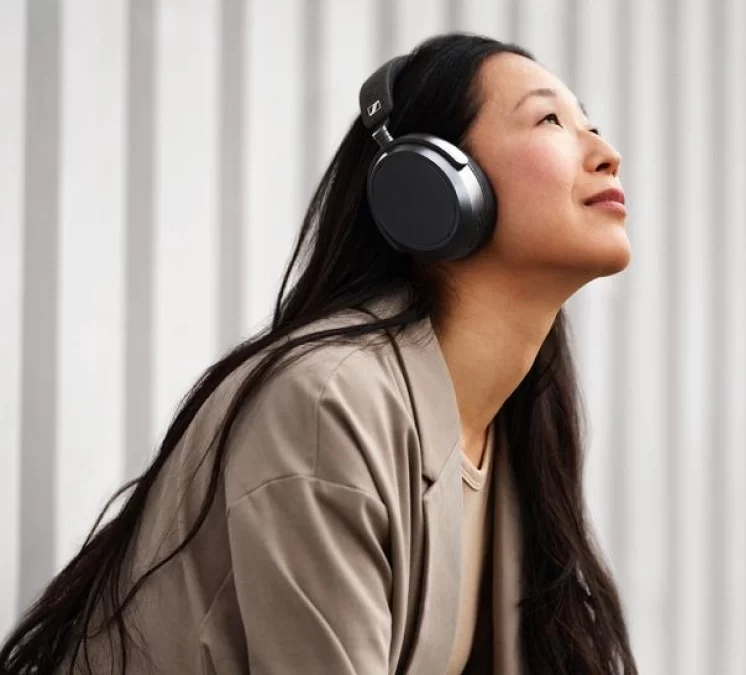Playing fast on a keyboard might seem like a skill reserved for the pros, but it's not as out of reach as it looks. Every pianist, from beginners to seasoned musicians, started with the same basic steps and a lot of practice. It's about breaking down the barriers, one note at a time, and before you know it, those fingers are flying across the keys with ease.
The key to mastering speed on the keyboard lies in understanding the right techniques and consistently applying them. It's not just about moving your fingers faster, but also about smart practice, proper posture, and using the right exercises. Let's dive into how beginners can start their journey towards becoming speed demons on the keyboard, making beautiful music faster than they ever thought possible.
Understanding the Basics
Before diving into the nitty-gritty of playing fast on a keyboard, it's crucial to grasp the basics. These fundamentals serve as the building blocks that will support a beginner's journey toward achieving speed and dexterity. Understanding and mastering these basics not only pave the way for quicker learning but also ensure that the music created is both beautiful and technically sound.
First and foremost, beginners need to familiarize themselves with keyboard layout and finger placement. Knowing which finger goes where for specific keys is the groundwork of playing efficiently. It's like knowing the alphabet before writing a story. Here, they'll learn about the C major scale, which is a great starting point due to its simplicity and the fact that it uses white keys only.
Next up is hand coordination. Playing fast requires both hands to work in tandem, seamlessly executing different patterns and rhythms. At first, this might seem like patting your head and rubbing your stomach at the same time -- tricky but definitely achievable with practice. Starting with slow, simple melodies that use both hands helps in gradually building this coordination.
Additionally, incorporating correct posture and hand positioning cannot be overstated. Initially, this might not seem directly related to speed, but it's a game-changer. Proper posture and positioning reduce the risk of injury and strain, making it easier to play for longer periods and move across the keyboard swiftly. Remember, a relaxed body facilitates faster playing.
At this point, it’s also paramount to stress the importance of rhythm and timing. Without these, playing fast can result in a jumbled mess of notes. Metronomes or keyboard tools with built-in rhythm functions are invaluable for beginners to keep time and improve their musical ear.
To sum it up, understanding the basics is akin to laying a strong foundation for a house. It’s about getting comfortable with the keyboard, developing coordination, ensuring correct physical approach, and keeping time. All of these aspects work together to not only make fast playing possible but also make it sound good.
As they progress, beginners will find that these basic skills become second nature, making it easier to focus on speed and complexity. The journey from hitting the right keys to playing intricate melodies at a quick pace is filled with challenges but, with persistence and the right techniques, it’s definitely within reach.
Developing Finger Dexterity

In the journey to mastering fast keyboard play, developing finger dexterity is a crucial step that often gets overlooked. Dexterity refers to the ability of the fingers to move quickly and accurately, which is essential for playing complex melodies at speed. It's not just about moving fast, but also about having control and precision with each note.
Basic Exercises for Improved Dexterity
To enhance finger dexterity, beginners should start with simple exercises. One fundamental practice is scale repetition. Playing scales is akin to jogging for musicians; it builds stamina and strength. Start slowly, focusing on evenness in touch and sound, and gradually increase the speed. Another excellent exercise involves finger independence drills, where one practices pressing individual fingers down in various patterns without moving the others. This can help in reducing tension and increasing control over each finger's movements.
Incorporating Technique Into Practice Routines
Integrating specific techniques into daily practice is vital. Legato and staccato playing styles not only add expressiveness to the music but also challenge and develop finger strength and agility. Beginners should also explore exercises that require crossing fingers over one another to play scales or arpeggios. These techniques push the boundaries of what the fingers are used to and thus improve dexterity.
The Role of Regular, Incremental Practice
Consistency is key when working to increase finger dexterity. Regular practice, ideally daily, helps in muscle memorization and improvement. It's important to gradually increase the difficulty and speed of the exercises. However, it's equally crucial to avoid jumping ahead too quickly as this can lead to frustration and potential injury. Listening to the body and fingers is important; if something feels overly strenuous, it may be beneficial to reduce the speed or simplify the exercise.
Progress can be tracked through several indicators:
| Indicator | Description |
|---|---|
| Increased Speed | Ability to play exercises and pieces faster over time |
| Improved Precision | Higher accuracy in hitting intended notes |
| Reduced Fatigue | Ability to practice for longer periods without tiring |
| Enhanced Muscle Memory | Fewer mistakes and smoother transitions between notes |
Finger Strengthening Tips
Beyond keyboard exercises, engaging in activities that strengthen the fingers can also contribute to dexterity. Simple tasks like squeezing a stress ball or practicing finger stretches can improve strength and flexibility, making playing faster on the keyboard more achievable.
Practicing with Proper Posture

When embarking on the journey to playing fast on the keyboard, many beginners tend to overlook the significant role that proper posture plays in their development. Maintaining a correct posture is not just about looking professional; it's a fundamental aspect that impacts a player's endurance, dexterity, and overall playing efficiency. Good posture ensures that movements are fluid and that minimal strain is placed on the body, allowing for longer, more productive practice sessions.
To start, they should ensure their bench is positioned at such a height that their forearms are parallel to the keyboard. This alignment promotes wrist flexibility and prevents strain during rapid finger movements. Their feet must rest flat on the floor, providing stability and balance. If their feet don't comfortably reach the floor, using a footrest can make a world of difference.
Another critical element is the back posture. Slouching or leaning too far forward can lead to tension in the back and shoulders, eventually impeding their ability to play swiftly and accurately. They should aim to keep their back straight, yet relaxed, with their shoulders squared and down, away from the ears. This posture not only prevents fatigue but also ensures that their arms are free to move across the keyboard without restriction.
The distance from the keyboard is another factor that can significantly affect their playing speed. They shouldn't be so close that their elbows are cramped against their sides, nor so far that they have to stretch to reach the keys. Finding that perfect balance where their elbows are slightly away from their body allows for optimal arm and hand movement, facilitating quicker and more precise keystrokes.
Incorporating these posture tips into their practice routine can dramatically enhance their playing capabilities. By adjusting their seat height, ensuring their feet are properly positioned, maintaining a straight yet relaxed back, and finding the ideal distance from the keyboard, they set the foundation for faster and more efficient keyboard playing. Regularly checking and correcting their posture will help them develop muscle memory for these proper techniques, making them second nature over time.
Besides the immediate benefits of reduced strain and increased endurance, practicing with proper posture paves the way for advanced techniques and playing styles. As they progress, the foundation of good posture will enable them to tackle challenging compositions with ease, showcasing their skill in fast keyboard playing.
Utilizing Effective Exercises

When diving into the world of keyboard playing, especially with the goal of increasing speed, integrating specific exercises into one's practice routine is vital. These exercises are not just about pushing fingers to move faster; they're about building the muscle memory, strength, and precision required to play quickly and efficiently.
Finger Independence Exercises play a crucial role in developing dexterity. One popular method involves practicing scales and arpeggios, as they require the player to use all fingers in a controlled, rhythmic manner. Beginning slowly and gradually increasing the speed without compromising accuracy ensures that each finger gains the necessary strength and independence.
Hanon Exercises, known for their effectiveness in improving speed, agility, and finger strength, should not be overlooked. Comprising 60 exercises, these drills are designed to address specific weaknesses in finger coordination. Starting with the first few exercises and progressively working through the series can lead to significant improvements in playing speed.
Incorporating Metronome Practice is another key strategy. The metronome provides a constant beat that helps players maintain a steady tempo. Starting at a slow pace and incrementally increasing the metronome speed challenges the player to keep up, pushing their limits in a controlled manner. Remember, the goal isn't just to play faster but to play accurately at higher speeds.
Lastly, Sight-Reading Practice significantly contributes to playing faster. By regularly practicing reading and playing new pieces of music, players improve their ability to quickly process new information and translate it into action. This skill, while challenging to develop, is invaluable for those looking to improve their speed on the keyboard.
Practice Routine Tips
To make the most of these exercises, integrating them into a daily practice routine is essential. Here are a few tips to ensure effective practice:
- Set Realistic Goals: Start with achievable goals and gradually increase the complexity and speed of exercises.
- Maintain Consistency: Daily practice, even for short periods, can yield better results than sporadic, lengthy sessions.
- Focus on Accuracy First: Speed should come after mastering accuracy. Rushing through exercises without precision won't lead to improvement.
- Keep Exercises Varied: Rotate through different exercises to keep practice sessions fresh and cover various aspects of playing.
Goal Setting and Tracking Progress

When embarking on the journey to play faster on the keyboard, goal setting is a crucial step that often goes overlooked by many beginners. Without clear, achievable goals, progress can seem elusive, leading to frustration and potentially giving up too early. They should start by setting specific, measurable, attainable, relevant, and time-bound (SMART) goals. For instance, mastering a particular piece at a certain tempo within two weeks is far more tangible than a generic goal of "play faster".
Tracking progress is equally important as setting goals. It's not just about noticing improvements in speed and dexterity but also about understanding the relationship between practice habits and outcomes. Beginners should keep a practice journal or use digital apps designed for musicians. These tools allow them to note down their daily practice routines, challenges faced, pieces or scales worked on, and incremental improvements.
Implementing a Structured Practice Routine
A structured practice routine is instrumental in achieving set goals. Beginners should divide their practice sessions into different segments such as warm-up exercises, scales, and arpeggios, focusing on speed, and finally, applying these skills to pieces they are learning. Each session should start with slower tempos, gradually increasing to the desired speed. It prevents muscle strain and builds a solid foundation for precision at higher speeds.
Utilizing Technology for Feedback
In today’s digital age, several tools can provide immediate feedback, which is invaluable for tracking progress. Metronomes are essential for maintaining a consistent tempo and gradually increasing speed. Recording oneself and analyzing the playback helps in identifying areas that need improvement. Moreover, there are software and apps designed specifically for musicians that track accuracy, speed, and other metrics during practice.
Importance of Incremental Progress
It's vital to acknowledge that progress in keyboard playing, especially in achieving faster speeds, is often incremental. Small improvements over time lead to substantial long-term gains. Incremental progress also helps in setting realistic expectations and reduces the likelihood of injury due to overexertion. Beginners should celebrate small victories to stay motivated throughout their learning journey.
Adapting Goals Based on Progress
As beginners monitor their progress, they may find it necessary to adjust their goals. Sometimes, they might achieve their objectives faster than expected, or they might encounter unforeseen challenges. Being flexible and willing to redefine goals ensures continual development and prevents stagnation. It's a dynamic process that mirrors the evolving nature of learning an instrument.
Conclusion
Mastering the keyboard at a fast pace isn't just about pressing keys quicker. It's about laying the right foundation with proper posture, engaging in targeted exercises, and setting achievable goals. By focusing on the nuances of posture, dedicating time to Finger Independence and Hanon Exercises, and leveraging technology for feedback, beginners can make significant strides. Remember, consistency is key. With patience and regular practice, the journey from slow, deliberate notes to rapid, fluid melodies becomes not just a possibility but a reality. Embrace the process, celebrate your progress, and let your fingers dance across the keyboard with newfound speed and precision.
Harlan Kilstein began playing piano during covid with no piano background at all. He taught himself how to play learning what to do and what not to do.
Today he's an advanced intermediate player and can help you grow in your skills because he learned all this on his own.








